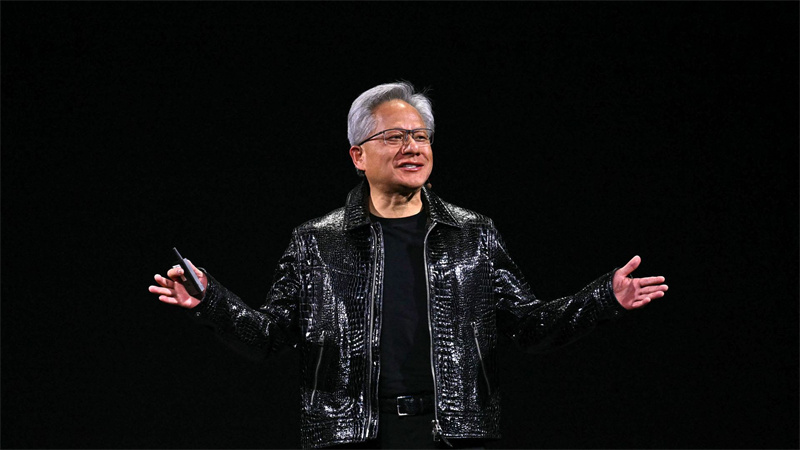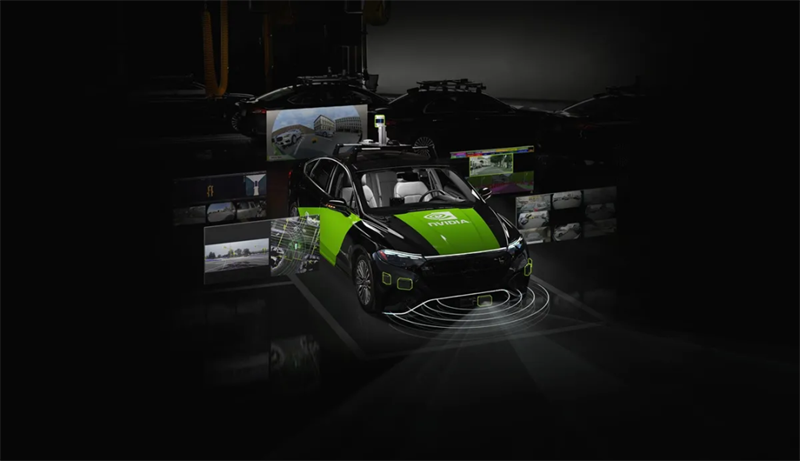NVIDIA has made a significant splash at CES 2025, unveiling groundbreaking developments in the semiconductor industry. On January 6, 2025, NVIDIA's founder and CEO Jensen Huang took the stage at the world's largest consumer electronics show, dressed in his iconic "classic leather jacket," delivering a keynote that caught the attention of the global tech community. As of January 6, NVIDIA’s stock price stood at $149.43, up 3.43%, bringing its market cap to a staggering $3.66 trillion, positioning it at the forefront of global market valuations.
1. Gigantic Chip to Surpass the World's Fastest Supercomputer
Jensen Huang boldly predicted that the volume of data generated by humanity in the coming years will exceed the total data ever produced in history. As data becomes increasingly multimodal, encompassing videos, images, sounds, and more, this transformation poses both an opportunity and a challenge for chip technology. Huang unveiled a vision for a colossal chip powered by 72 Blackwell GPUs or 144 chips, aimed at surpassing the capabilities of the world's fastest supercomputer.
2. New GPU Launch: The RTX 50 Series
NVIDIA introduced the next-generation GeForce RTX 50 series desktop and laptop GPUs, designed for gamers, creators, and developers. Built on the Blackwell architecture, these GPUs integrate 92 billion transistors, achieving a processing power of 4000 TOPS. With 4 AI processing units, the new GPUs deliver three times the performance of the previous Ada series. Micron will provide memory support for the new products, which will hit the market starting this month. Pricing for the RTX 50 series models is as follows:
● RTX 5070: $549
● RTX 5070 Ti: $749
● RTX 5080: $999
● RTX 5090: $1999
In comparison, the RTX 4090, which is hailed as the "World's Fastest GPU," offers remarkable performance with 24GB of GDDR6X memory, third-generation ray tracing cores, and fourth-generation tensor cores. The newly released RTX 5090 outperforms the RTX 4090 by a factor of two, and the RTX 5070 offers comparable performance to the RTX 4090 at less than half the price, making it a significant value proposition.

3. Blackwell Chip Progress: Full-Scale Production
The highly anticipated Blackwell chip has entered full-scale production, with major cloud service providers already building systems around it. Approximately 15 hardware manufacturers have released about 200 different models and configurations to meet diverse market demands. NVIDIA boasts a wide range of computing network systems, such as NVLink 36 and NVLink 72, with around 45 factories currently involved in production. This vast network supports global data centers and paves the way for NVIDIA’s ambition to create a massive Grace Blackwell NVLink72 chip, featuring 72 or 144 Blackwell GPUs, targeting the world's fastest supercomputers.
4. Collaboration with TSMC on Silicon Photonics
As chip manufacturing approaches its physical limits, NVIDIA is partnering with TSMC to explore emerging technologies. At the end of last year, both companies successfully developed the first silicon photonics chip prototype, combining photon circuits with traditional circuits to use photons for high-speed internal chip communication. This breakthrough offers advantages in bandwidth, frequency, and power efficiency, addressing chip interconnect bottlenecks. Both companies are also focusing on advancements in optoelectronic integration and advanced packaging technologies, empowering the next generation of AI chips and leading the way in chip technology innovation.

5. Next-Generation Autonomous Driving Chip "Thor" and Toyota Partnership
In an exciting development for NVIDIA’s automotive division, Toyota has become a new customer for NVIDIA’s automotive products. Toyota will utilize NVIDIA's automotive chips and operating systems for its next-generation vehicles. NVIDIA also launched its next-gen AI-driven automotive chip, “Thor,” positioning itself to expand its automotive business to $5 billion by the fiscal year 2026. NVIDIA is accelerating its deepening presence in the automotive sector, marking a new era for intelligent driving.

NVIDIA also announced a long-term strategic partnership with Aurora, Continental Group, and NVIDIA to deploy autonomous trucks powered by NVIDIA’s DRIVE platform. The DRIVE OS system will be integrated into the Aurora Driver, which is set for mass production of SAE Level 4 autonomous driving systems by Continental in 2027.
Other companies adopting NVIDIA’s DRIVE AGX for their autonomous driving and advanced driver-assistance systems (ADAS) include BYD, Jaguar Land Rover, Li Auto, Lucid, Mercedes-Benz, NIO, Nuro, Rivian, Volvo Cars, Waabi, Wayve, Xiaomi, Zeekr, and Zoox, a subsidiary of Amazon.
6. Expanding the AI Model Ecosystem
NVIDIA is extending its AI model ecosystem by launching a complete series of models based on Llama, including Llama Nemotron Nano, Super, and Ultra. These models cover a wide range of applications, from PCs and edge devices to large data centers. With these models, NVIDIA aims to assist 30 million software engineers worldwide in improving coding efficiency and code quality, further enriching its AI ecosystem.
+86 191 9627 2716
+86 181 7379 0595
8:30 a.m. to 5:30 p.m., Monday to Friday
